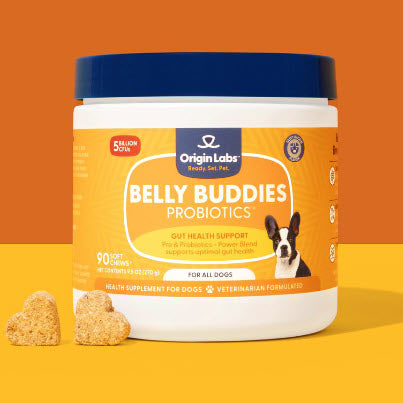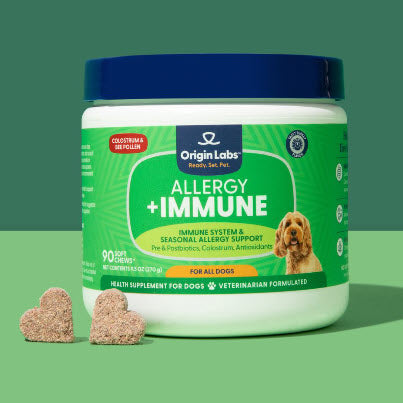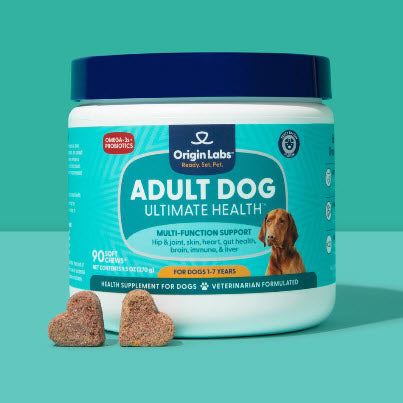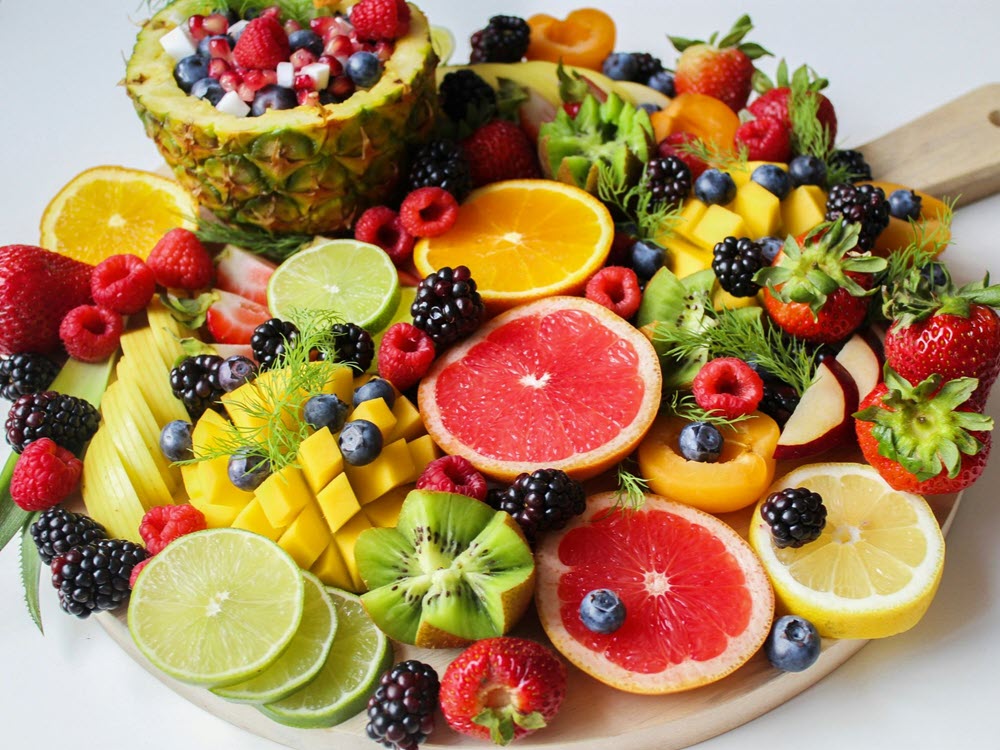Introduction
When it comes to keeping our dogs healthy, a balanced diet is essential. Like us, dogs need a variety of nutrients to stay well and full of energy. One question many pet owners have is: what fruits can dogs eat? Knowing which fruits are safe for dogs to enjoy can add extra vitamins and fiber to their diet, which is good for their overall health.
Why Fruits are Good for Dogs
Fruits offer different benefits for dogs, including:
- Vitamins: These are important for the immune system and skin.
- Fiber: This helps with digestion and keeping the bowels healthy.
- Water Content: Fruits can contribute to your dog's hydration.
The Importance of Choosing Safe Fruits
Not all fruits are safe for dogs to eat. Some fruits can be harmful because they contain toxins or too much sugar, which could lead to health problems like obesity or diabetes. It's important to know the risks involved so you can make sure you're feeding your dog the right fruits. Feeding them the wrong ones could cause anything from an upset stomach to more serious health issues.
By understanding which fruits are safe and which ones to avoid, you can give your dog a nutritious and safe diet that supports their well-being.
The Nutritional Needs of Dogs
Canine nutrition plays a crucial role in determining a dog's overall health and well-being. Similar to humans, dogs need a well-rounded diet that consists of proteins, carbohydrates, fats, vitamins, and minerals to function at their best.
Key Nutrients for Dogs
Here are the main nutrients that dogs need and their functions:
- Proteins: These are the building blocks of cells and tissues. They are necessary for growth, tissue repair, immune function, and the production of enzymes and hormones.
- Carbohydrates: This includes fiber, which provides energy and promotes good gut health.
- Fats: Fats serve as a concentrated source of energy. They help with nutrient absorption, nerve communication, and maintaining healthy skin and coat.
- Vitamins and minerals: These are essential for regulating various metabolic processes in the body. A lack or excess of certain vitamins and minerals can lead to serious health issues.
The Benefits of Adding Fruits to a Dog's Diet
Incorporating fruits into your dog's diet can be a great way to supplement their nutritional needs. Fruits offer natural sources of important nutrients such as:
- Vitamins A, C, E, and K
- Dietary fiber
- Potassium
- Antioxidants
The good news is that many fruits provide these benefits without adding unnecessary fats or calories to your dog's diet.
Precautions When Feeding Fruits to Dogs
When introducing new fruits into your dog's diet, keep these precautions in mind:
- Research the safety of the fruit beforehand or consult with a veterinarian.
- Even safe fruits should be given in moderation due to their natural sugar content, which can contribute to weight gain and dental problems if consumed excessively.
- Remove any seeds or pits from the fruits, as they can pose a choking hazard or contain toxins.
The Role of Fruits in a Dog's Diet
While fruits can offer valuable nutrients for dogs, it's important to remember that they should be used as a supplement to their regular meals, not as a replacement. A well-balanced dog food that meets all their nutritional needs should still be the main part of their diet.
By having a good understanding of canine nutrition and making thoughtful choices when it comes to incorporating fruits, you can provide your dog with a varied and nutritious diet that supports their overall health and well-being.
Safe Fruits for Dogs
When it comes to adding different flavors and nutrients to a dog's diet, giving them fruits that are safe for dogs can be a great idea. Not only will it make mealtime more exciting for your furry friend, but it can also have positive effects on their overall health.
1. Apples
Why Apples are Good for Dogs
Apples are packed with important nutrients that contribute to a dog's well-being. They are a good source of vitamins A and C, as well as fiber, which is beneficial for digestion. Since apples have low protein and fat content, they can be a healthy snack option, especially for older dogs or those with specific dietary needs.
- Vitamin A: This vitamin is essential for maintaining good vision, supporting the immune system, and keeping the skin healthy.
- Vitamin C: Acting as an antioxidant, vitamin C helps boost the immune system and reduce inflammation.
- Fiber: Having enough fiber in a dog's diet promotes regular bowel movements and supports digestive health.
Another advantage of apples is their crunchy texture, which can help clean your dog's teeth and freshen their breath.
How to Safely Feed Apples to Dogs
Giving apples to dogs requires taking certain precautions to ensure their well-being:
- Remove Seeds and Core: Apple seeds contain cyanide, which can be harmful to dogs if consumed in large amounts. Always take out the seeds and core before offering an apple slice or chunk to your pet.
- Wash Thoroughly: To get rid of any pesticides or chemicals on the apple's skin, make sure to wash it under running water before serving.
- Choose the Right Size: Give your dog apple pieces that are appropriate for their size to prevent them from choking. Remember that smaller dogs will need smaller slices than bigger ones.
Tip: If you're introducing apples to your dog's diet for the first time, start with a small quantity to see how they react to it.
Conclusion
By including apples in your dog's diet, you're not only providing them with a yummy treat but also various health benefits. Just remember to prepare them properly by removing any potentially harmful parts of the fruit. With these guidelines in mind, apples can be a safe and nutritious addition to your furry companion's meals.
As we move on to discussing other fruits that are safe for dogs, you'll discover that there are many options out there that can contribute positively to a dog's eating routine.
2. Bananas
Bananas are a popular fruit choice for dogs because they are not only tasty but also beneficial for their health. Here's why you can consider adding bananas to your dog's diet:
Health Benefits of Bananas for Dogs
- High in Potassium: Potassium is an important mineral that helps with heart and muscle function, as well as overall cell health.
- Packed with Vitamins: Bananas contain vitamins C and B6, which can boost your dog's immune system and contribute to healthy skin.
However, it's essential to be mindful of how much banana you give to your furry friend. While bananas can be a healthy addition, they do have a relatively high sugar content, which can lead to weight gain and related health issues if consumed excessively.
Tips for Feeding Bananas to Dogs
Here are some guidelines to follow when sharing bananas with your dog:
- Portion Control: Provide a few slices of banana as an occasional treat or reward.
- Avoid Overfeeding: Remember that bananas should not replace your dog's regular meals due to their sugar content.
Please note that these tips are general recommendations. For personalized advice regarding your dog's specific dietary needs, it's always best to consult with your veterinarian.
3. Blueberries
When it comes to choosing fruits for your furry friend, blueberries are a top contender. Not only are they delicious, but they also offer a range of health benefits for dogs.
Why are blueberries good for dogs?
Blueberries are often referred to as a superfood because they are packed with nutrients that can support your dog's well-being. Here's what makes them so special:
- Antioxidant Powerhouse: Blueberries are loaded with antioxidants, which help protect the body against harmful free radicals. These antioxidants play a vital role in boosting the immune system and preventing damage to cells.
- Vitamins and Fiber: Blueberries are a great source of vitamins C and K, as well as dietary fiber. These nutrients are important for maintaining overall health and can contribute to a strong immune response.
- Low in Calories: If you're watching your dog's weight, blueberries can be a guilt-free treat option. They are relatively low in calories compared to other fruits.
How to safely feed blueberries to your dog
While blueberries are generally safe for dogs, there are a few things to keep in mind:
- Size Matters: For small breeds or puppies, whole blueberries may pose a choking hazard. It's best to either cut them into smaller pieces or mash them before serving.
- Everything in Moderation: Like any treat, blueberries should be given in moderation. Too much of any food can upset your dog's stomach or lead to weight gain.
By following these simple guidelines, you can incorporate blueberries into your dog's diet as a tasty and nutritious snack.
4. Cantaloupe: A Healthy and Safe Fruit for Your Dog
Cantaloupe is a dog-friendly fruit that's not only low in calories but also rich in essential nutrients. Here's everything you need to know about feeding cantaloupe to your furry friend:
Is Cantaloupe Safe for Dogs?
Yes, cantaloupe is safe for dogs when given in moderation as part of a balanced diet. It's a great option for pups looking to shed some pounds due to its low-calorie content.
The Benefits of Cantaloupe for Dogs
Here are some reasons why you should consider adding cantaloupe to your dog's menu:
- Vitamins Galore: Cantaloupe is packed with vitamins A and C, which are crucial for maintaining good eyesight and a strong immune system.
- Hydration Helper: Since cantaloupes are made up of mostly water, feeding your pooch small pieces of this juicy fruit can help keep them hydrated on hot summer days.
How to Serve Cantaloupe to Your Dog Safely
To ensure your dog enjoys cantaloupe without any issues, follow these preparation and serving tips:
- Remove the Seeds: Before offering cantaloupe to your pup, make sure to scoop out the seeds first. They can pose a choking hazard and may contain harmful substances.
- Discard the Rind: The tough outer skin of the cantaloupe should also be removed as it's difficult for dogs to digest and can potentially upset their stomach.
- Cut into Small Pieces: Slice the cantaloupe into small, bite-sized chunks that are easy for your dog to chew and swallow.
- Start Slowly: When introducing any new food, including cantaloupe, into your dog's diet, it's best to start with small portions to see how their digestive system reacts.
Monitoring Your Dog's Reaction
After feeding your dog cantaloupe for the first time, keep an eye out for any adverse reactions such as stomach discomfort, diarrhea, or allergic symptoms. If everything goes well and your pup enjoys this fruity treat, you can continue incorporating it into their snack rotation alongside other safe options like apples for dogs.
5. Coconut
Coconut is a dog-friendly fruit that is nutritious and beneficial for dogs. It contains lauric acid, fiber, and healthy oils that can support various aspects of your dog's health.
Why Coconut is Good for Dogs
Coconuts are known to:
- Boost the immune system: Lauric acid, a component of coconuts, has anti-inflammatory properties and may help protect against viruses.
- Aid in digestion: The high dietary fiber content in coconuts can promote healthy digestion in dogs.
- Improve skin and coat health: The oils present in coconuts can contribute to a glossy and healthy-looking coat in dogs.
How to Feed Coconut to Your Dog
When giving coconut to your dog:
- Choose the right form: Fresh coconut meat may be tough for some dogs to digest, so it's better to offer shredded or desiccated coconut.
- Introduce gradually: If you're adding coconut oil to your dog's diet, start with small amounts to prevent any stomach upset.
Remember, moderation is important when feeding coconut to your dog because it is high in fat. Overfeeding can lead to weight gain or pancreatitis in dogs.
Stay tune for the next section where we'll explore another fruit that can be both refreshing and nutritious for your furry friend - cucumbers!
6. Cucumbers
A place in the list of dog-friendly fruits is deservedly occupied by cucumbers. These green, crunchy treats offer a plethora of benefits for our canine pals. As a safe and low-calorie snack, cucumbers are an excellent addition to the diet of overweight or obese dogs.
Hydration and Refreshment
One of the standout features of cucumbers is their high water content. This makes them a perfect hydrating treat on hot summer days or after energetic play sessions.
Nutritional Value
In terms of nutritional value, cucumbers pack quite a punch. They come loaded with vitamins K, C, and B1 - all vital for maintaining your dog's health. That's not all; these refreshing treats are also rich in minerals like copper, potassium, and magnesium.
Safe Serving Tips
When serving cucumbers to dogs, it's crucial to chop them into manageable pieces to prevent choking. So next time you're munching on a salad, consider sharing a few cucumber slices with your furry friend!
7. Mangoes
Among fruits that are safe for dogs, mangoes are a delicious tropical option. Here's how you can safely share mangoes with your canine companion:
Precautions when giving mangoes to dogs
- Remove the Pit: Mango pits are not safe for dogs to eat as they can be a choking hazard and contain small amounts of cyanide. Make sure to take out the pit before giving your dog any mango slices.
- Peel the Skin: Mango skin can be tough for dogs to digest and may cause an upset stomach. It's best to remove the skin before offering mango to your pooch.
Benefits of feeding mangoes to dogs
- Skin and Coat Health: Mangoes are packed with vitamins A, E, and C, which are essential for maintaining a healthy skin and coat in dogs.
- Digestive Aid: The fiber found in mangoes can help support good digestion and regular bowel movements in dogs.
Remember these tips when feeding mangoes to your dog:
- Always introduce new foods gradually into your dog's diet to avoid any digestive upset.
- Watch out for any allergic reactions or adverse effects after giving mangoes to your dog.
- Serve mangoes in moderation as a special treat rather than a regular part of their diet.
With these precautions and benefits in mind, you can treat your furry friend to some tasty mango goodness!"
8. Oranges
When it comes to dog-friendly fruits, oranges are indeed a viable option. They can be a refreshing and juicy treat for your furry friend, provided they are given in the right manner.
Key points to keep in mind when feeding oranges to dogs:
- Oranges, like most fruits, should be presented to dogs in a form they can easily consume. Therefore, it's advisable to serve oranges in small, peeled segments. This makes it easier for them to chew and digest.
- While oranges are safe for dogs, their high sugar content warrants caution. It's crucial to practice moderation when including oranges in your dog's diet. Overfeeding can lead to gastrointestinal discomfort and other health issues related to excess sugar consumption.
This citrus fruit is not only tasty but also packed with vitamin C, potassium, and fiber. The nutrients found in oranges contribute towards boosting immunity and promoting digestive health, making them a beneficial addition to your dog’s diet.
Remember, every dog is unique and may respond differently to new foods. Always monitor your pet's reaction after introducing any new food item into their diet.
12. Peaches for Dogs
Peaches, a summer staple, are among the fruits that are safe for dogs to eat and can add variety to your pet's diet. Peaches for dogs should be given in moderation, not only because of their sugar content but also to avoid any stomach problems from trying a new food. Here's how to share this juicy fruit with your furry friend:
Safely Preparing Peaches
Always remove the pit and any stems from the peach. These parts can be dangerous, as the pit can get stuck in their throat and has traces of cyanide, which is poisonous to dogs.
Health Benefits
When given in the right amount, peaches can provide vitamin A and fiber, which are good for your dog's eyesight and digestion.
Introducing Peaches
Start with small pieces to see how your dog reacts. If there are no bad reactions like an upset stomach or allergies, you can sometimes give your dog this sweet fruit as a treat.
Remember, fresh peaches are better than canned ones or those in syrup because they may have added sugars and chemicals that are not good for dogs.
By giving your dog a mix of safe fruits like apples for dogs and now peaches, you improve their diet while making mealtime more interesting.
13. Pears
Pears are a great choice of fruit to share with your dog, as they offer some nutritional benefits. Here's what you need to know about giving pears to your dog:
Key Points about Pears for Dogs
- Moderation Matters: Pears have a high sugar content, so it's important to give them to your dog in small amounts. This will help prevent weight gain and keep their blood sugar levels balanced.
- Preparation is Important: Before giving your dog a slice of pear, make sure to remove the seeds and core. These parts can be a choking hazard and contain traces of cyanide, which is harmful to dogs in large quantities.
- Nutritional Benefits: Pears are a good source of vitamins C and K, which can help boost your dog's immune system and support their bone health. The fiber found in pears also promotes a healthy digestive system and regular bowel movements.
When giving your dog pears as a treat, it's best to cut the fruit into small pieces that are easy for them to eat and digest.
14. Pineapple
As part of the dog-friendly fruits list, pineapple holds a safe spot. Dogs can indeed enjoy this tropical treat but as with other fruits, moderation is key.
Pineapples are rich in fiber and vitamin C, providing a variety of health benefits. Its high fiber content aids digestion and can help prevent constipation in dogs. Meanwhile, Vitamin C acts as an antioxidant supporting overall immune function.
When serving pineapple to your dog, take note of the following:
- Remove the tough skin and hard core: Before feeding pineapple to your dog, make sure to remove the tough outer skin and hard inner core. These parts can be difficult for dogs to chew and digest, potentially leading to gastrointestinal upset or obstruction.
- Serve in small amounts: Pineapple is best served in small pieces as an occasional treat. Too much pineapple can lead to stomach upset due to its high natural sugar and fiber content.
Incorporating small amounts of fresh pineapple for dogs into their diet can offer a refreshing and healthy variation to their regular treats. Just remember, every dog is unique and may react differently to certain foods. Always observe your pet's reaction when introducing a new fruit into their diet.
15. Pumpkin
When it comes to dog-friendly fruits, pumpkin stands out as a particularly beneficial choice. This vibrant, orange squash is not only safe for dogs, but also offers several health benefits.
Health Advantages of Pumpkin for Dogs
Pumpkin is a powerhouse of nutrients that can contribute positively to a dog’s well-being. Among the key benefits are:
- Digestive Health: Pumpkin is rich in fiber, which aids in digestion and can help alleviate constipation in dogs. Adding a spoonful of plain, cooked pumpkin to your dog's regular meals can provide this much-needed dietary fiber.
- Overall Health Boost: The beta-carotene found abundantly in pumpkin is converted into vitamin A in your dog's body, supporting their eyesight and immune system.
- Weight Management: As it is low in calories and high in fiber content, pumpkin can be a useful addition to the diet of dogs that need to manage their weight. The fiber creates a feeling of fullness without adding extra calories.
Feeding Pumpkin to Dogs Correctly
It's crucial to serve pumpkin correctly to ensure your dog reaps its benefits without any side effects. Always opt for plain, cooked pumpkin — canned or fresh — without added sugar or spices.
Remember, moderation is key when incorporating new foods into your pet's diet. Start with small amounts and monitor your dog for any adverse reactions.
So next time you're pondering on what fruits are safe for dogs or specifically questioning 'apples for dogs' or 'pumpkin for dogs', remember this nutritious squash as a valid option. It might just become their favorite treat!
16. Raspberries
Raspberries are a great addition to your dog's diet. They not only taste good but also provide several health benefits, thanks to their fiber, antioxidants, and vitamins.
Are Raspberries Safe for Dogs?
- Like with any fruit, raspberries should be given to dogs in moderation because of their natural sugars and small amounts of xylitol, which can be harmful in large quantities.
- It's important to note that too many raspberries can cause digestive issues in some dogs.
Health Benefits of Raspberries for Dogs
- Fiber: Raspberries are high in fiber, which promotes healthy digestion.
- Antioxidants: These berries are packed with antioxidants that help fight off harmful substances called free radicals and reduce inflammation.
- Vitamins and Minerals: Raspberries contain vitamins C and K, manganese, and other nutrients that support overall well-being.
How to Feed Raspberries to Your Dog
- Wash Them Well: Before giving raspberries to your dog, make sure you wash them thoroughly to remove any pesticides or dirt.
- Start Slowly: Introduce raspberries into your dog's diet gradually to see how they react. This will help prevent any potential stomach upset or allergies.
- Serve as a Treat: Use raspberries as a treat or mix them with your dog's regular food for an added nutritional boost.
Remember to keep an eye on your furry friend after feeding them raspberries for the first time. If you notice any unusual symptoms or signs of an allergic reaction, stop giving them raspberries and consult your veterinarian.
17. Strawberries
Delicious and vibrant, strawberries fall into the category of dog-friendly fruits, providing a source of vitamin C, fiber, and antioxidants.
Strawberry Nutrition for Dogs
Dogs can reap health benefits from strawberries much like humans do:
- Vitamin C is known for its immunity-boosting properties, helping dogs stay healthy.
- Fiber aids in digestion, contributing to a well-functioning digestive system.
- Antioxidants help ward off diseases by combating free radicals in the body.
Serving Strawberries to Dogs
To serve strawberries to your pet:
- Remember to remove the leaves and stems first as these can be hard for dogs to digest.
- Note that while they are safe, they should only be given in moderation due to their natural sugar content.
- As with all foods outside their regular diet, introducing strawberries slowly helps monitor for any adverse reactions.
Consider strawberries as an occasional treat rather than a dietary staple. A fun way to incorporate them could be:
Adding a few slices on top of their regular meal or freezing them for a refreshing summer treat.
With these precautions in mind, apples and strawberries alike can serve as tasty, nutritious inclusions to your dog's diet.
18. Watermelon
Watermelon is one of the fruits that are safe for dogs to eat and can be a great snack, especially during hot weather when they need extra hydration. Unlike apples for dogs, which require some precautions with the seeds and core, watermelon is easier to handle as long as you follow these tips:
How to Prepare Watermelon for Your Dog
- Choose Seedless: Pick a seedless watermelon variety to avoid the risk of your dog swallowing and getting choked on the seeds.
- Remove the Tough Skin: Always take off the hard outer skin before giving watermelon to your pet; it's hard for dogs to digest and may cause stomach discomfort.
Benefits of Watermelon for Dogs
- Watermelon for dogs is rich in vitamins A, B6, C, and has a high water content of about 92%.
- It can serve as a tasty way to give your dog important nutrients while also helping them stay hydrated.
How Much Watermelon Can Dogs Eat?
Despite its advantages, it's important to give watermelon to your dog in moderation because of its natural sugars, which can be too much in large amounts. Here are some guidelines:
- For small dogs: Offer a few small pieces of watermelon as an occasional treat.
- For medium to large dogs: You can give them slightly more, but still as part of their overall balanced diet.
Tips for Introducing Watermelon to Your Dog
When you're introducing watermelon or any new fruit to your dog's diet:
- Start with small amounts: Begin by giving them a small piece or two and see how they react.
- Monitor for any negative effects: Watch out for signs of stomach upset or allergies such as vomiting, diarrhea, or itching.
- Gradually increase the portion: If everything goes well, you can slowly increase the amount over time.
Remember, every dog is different, so it's essential to pay attention to your pet's individual needs and consult with a veterinarian if you have any concerns.
What Fruits are Healthiest for Dogs?
When it comes to identifying the healthiest fruits for dogs, Blueberries, Apples, and Bananas emerge as top contenders.
Blueberries
- High antioxidant content helps combat free radicals, promoting overall health and vitality.
- Fiber present in blueberries assists in maintaining a healthy digestive system.
- Remember to serve these berries in moderation, especially to smaller breeds, due to their potential choking hazard.
Apples
- Dogs can enjoy a crunchy treat that provides essential vitamins and fiber.
- Excellent sources of Vitamins A and C, both crucial for maintaining your dog's skin and coat health.
- Fiber from apples aids digestion and keeps your dog feeling full longer, reducing the likelihood of overeating.
- It's important to note that the seeds and core should be removed before offering an apple to your dog, as they can pose a choking risk or cause discomfort.
Bananas
- Make a sweet, creamy treat that dogs often love.
- Rich in potassium, an essential mineral that aids muscle function and maintains fluid balance.
- Additionally, bananas offer a variety of vitamins and minerals that contribute to canine health.
- However, due to their high sugar content, bananas should be served sparingly as an occasional treat.
By incorporating these fruits into your dog's diet appropriately, you can provide them with beneficial nutrients while offering a tasty change from regular dog food.
Incorporating Fruits Into Your Dog's Diet: Tips and Considerations
Introducing fruits into your dog's diet can be an excellent way to enrich their nutritional intake. However, this should be done with caution and consideration. Here are some key tips for feeding fruits to dogs:
1. Start Slow
Introduce fruits in small amounts and monitor your dog's response. This allows you to determine whether they enjoy the fruit and if it agrees with their digestive system.
2. Portion Control
While fruits offer numerous health benefits, they also contain sugars. Therefore, it is crucial to limit their quantity in your dog’s diet. Remember, fruits should complement their primary food, not replace it.
3. Preparation Matters
Ensure you properly clean the fruit and remove all seeds or pits as these can be harmful to dogs. For fruits with tough rinds like melons or pineapples, remove the rinds to prevent choking hazards.
4. Consult Your Vet
If you have doubts about a particular fruit or if your dog has specific dietary needs or medical conditions, it's a good idea to consult with your vet before introducing new food items into their diet.
In the next section, we delve deeper into specific fruits that are safe for dogs to eat, along with their health benefits and preparation tips.
Moderation is Key: How Much Fruit Can Dogs Safely Eat?
The concept of moderation is important when it comes to feeding fruits to dogs. It means finding the right balance so that your pet can enjoy the benefits of fruits without any negative effects. Here are some tips to help you understand how much fruit your dog can safely eat:
1. Fruits as Occasional Treats
While fruits are healthy, they should be given as an occasional treat rather than a regular part of your dog's diet. This is because fruits contain natural sugars, and too much sugar can lead to obesity or other health problems in dogs. One way to incorporate fruits into your dog's routine is by using them as rewards during training sessions. This not only makes the intake controlled but also helps your dog associate these treats with positive behavior.
2. Consider Your Dog's Size and Breed
The size and breed of your dog play a role in determining how much fruit they can safely consume. Larger breeds may be able to tolerate more fruit compared to smaller breeds, who are at a higher risk of digestive issues if given too much fruit. It's always a good idea to consult with your veterinarian to get specific recommendations based on your dog's individual needs.
3. Start Small and Observe
When introducing fruits into your dog's meals, start with small amounts and see how they react. Watch out for any changes in their behavior or digestion. If everything seems fine, you can gradually increase the portion size over time.
4. Balanced Diet is Key
Remember that fruits should only be a part of a well-rounded diet for dogs. This includes high-quality proteins, grains, and vegetables along with a controlled amount of fruits. Consulting with your veterinarian can provide personalized advice on creating a balanced diet for your furry friend.
By following these guidelines, you can ensure that your dog enjoys the goodness of fruits while staying healthy and happy.
Consulting a Veterinarian Before Introducing Fruits to Your Dog's Diet
When you're thinking about adding fruits to your dog's meals, it's important to talk to a veterinarian first. This is especially true if you're wondering about feeding fruits to dogs that you haven't tried before.
Why Talk to a Vet?
A vet is an expert when it comes to animal health, including what foods are safe for dogs and how they can affect their bodies. They can give you useful information on:
- Which fruits are okay for your specific type of dog
- How much fruit your dog should eat based on their size, age, breed, and overall health
- Any allergies or negative reactions your dog might have to certain fruits
- The best way to introduce these new foods to avoid upsetting your dog's stomach
The Risks of DIY Research
While the internet can be a great resource for pet owners, it's important to remember that not all information online is accurate or reliable. Some websites might tell you that certain fruits are safe for dogs when they actually aren't.
It's also possible to find conflicting advice about the same fruit. For example, some sources might say that grapes are fine for dogs while others warn against them. This can make it confusing and risky to rely solely on online research.
Why Choose a Vet?
By consulting with a veterinarian before making any changes to your dog's diet or introducing new foods like fruits, you're getting advice from someone who has studied and understands animal nutrition. They can help you separate fact from fiction and make informed decisions about what's best for your furry friend.
Remember, by taking this extra step of talking to a vet, you're ensuring the safety and well-being of your beloved pet while giving them the chance to enjoy different types of healthy food options.
Conclusion
Embracing a variety of dog-friendly fruits can significantly contribute to the vitality and vigor of your canine companion. Incorporating fruits like apples, bananas, and blueberries into your dog's diet introduces a wealth of vitamins and antioxidants, supporting their immune system and overall health.
It is crucial to remember that while the dog health benefits of fruits are numerous, they should be served properly—seeds and pits removed, skins peeled where necessary, and always in moderation.
When chosen wisely and prepared correctly, the fruits on the dog-friendly fruits list can offer refreshing hydration, aid in digestion, and even assist in maintaining a healthy weight. With the guidance of a veterinarian and attention to preparation, these natural treats are more than just tasty—they're a step towards a happier, healthier life for your furry friend.








